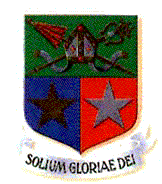

The Basilica of Our Lady, Star of the Sea
History
In the first century A.D. a Roman settlement grew up close to the site of today's basilica, where a Roman road approached the river Maas at a point where it was easy to cross. Archaeological excavations near the church in the 1980s confirmed the belief that a Roman temple once stood on this site. The remains and foundations of several round towers had been found even earlier, and these were probably part of a Roman fort around today's church. In times of distress, the local community sought refuge in this fort, living alongside the Roman garrison.
One such period of need occurred in the middle of the 4th century. The Rhine's conversion to christianity was already well under way. St Maternus was the first bishop of Cologne and Trier. The christian faith reached Maastricht via Trier and Tongern, the administrative capital of Lower Germania. St Servatius, who made Tongern the seat of his diocese, had established and spread christianity here. He died in Maastricht in 384 and was buried outside the townwalls, in accordance with Roman law, at a coemeterium set up by the Romans on the great military road, on the side where the Basilica of St Servatius now stands.
A christian place of worship must have been built at some stage either here or near the Basilica of our Lady. 21 Bishops resided here, among them St Monulf, St Gondulf, and also St Lambert, who was murdered in Liege in 705 and was the only saint to come from Maastricht.
In 722 St Hubert transferred the seat of the diocese to Liege, but down the centuries close links persisted with Maastricht, and above all with the church of Our Lady, which the bishops of Liege - who shared power over Maastricht until the period of the French Revolution - continued to regard as their second church.
A chapter was established in the church of Our Lady, but it is not certain in which year this took place. The general belief is that bishop Notger of Liege founded the chapter around 1000. It continued in existence until the French Revolution, and consisted of a number of clergymen who lived separately but recited together the eight canonical hours of the Breviary at Divine office.
The chapter was also responsible for pastoral affairs and for worship in the church, where it's meetings were held. The supreme dignitary of the chapter was the Provost, but a Dean was entrusted with day-to-day supervision. The priest conducted worship at the western end of the church, where an altar consecrated in the name of St Nicholas, patron saint of the mariners, stood on the gallery.
In 1342 a decision was taken to build a church specifically for parochial offices, which again was to be dedicated to St Nicholas. This church was next to the church of Our Lady on the other side of the convent, slightly further west, and was used for worship until 1837. The chapter had been dissolved in 1797 in the wake of the French Revolution, and the next 40 years were dark ones for the church of Our Lady. It was used first as a cannon forge, then as an armoury and powder store.
In 1837 it's sacred status was restored, and it replaced the church of St Nicholas, by then in a very poor state and subsequently demolished, as a parish church.
The reliquaries and furniture were brought - in some cases returned - to the church of Our Lady. These included the miracle-working statue of Our Lady, known as the 'Star of the Sea'-Madonna, which has been an object of adoration in this building ever since, initially in the church itself where the St Joseph altar now is situated, and from 1903, after the big restoration project headed by the wellknown architect
P. Cuijpers at the turn of the century, in the
Merode-chapel (13th c.), which is also the entrance to the church.
In 1933 Pope Pius XI granted the church the status of a Basilica Minor. It has been decorated with the conopeum (a canopy of red and gold stripes) and the tintinnabulum (a little bell in a gilt wooden frame on a rod), and these symbols are on display in the choir.
Bishop Gulielmus Lemmens chose the coat of arms of the Star of the Sea as his own and put the entire diocese of Roermond under the protection of Our Lady Star of the Sea.
